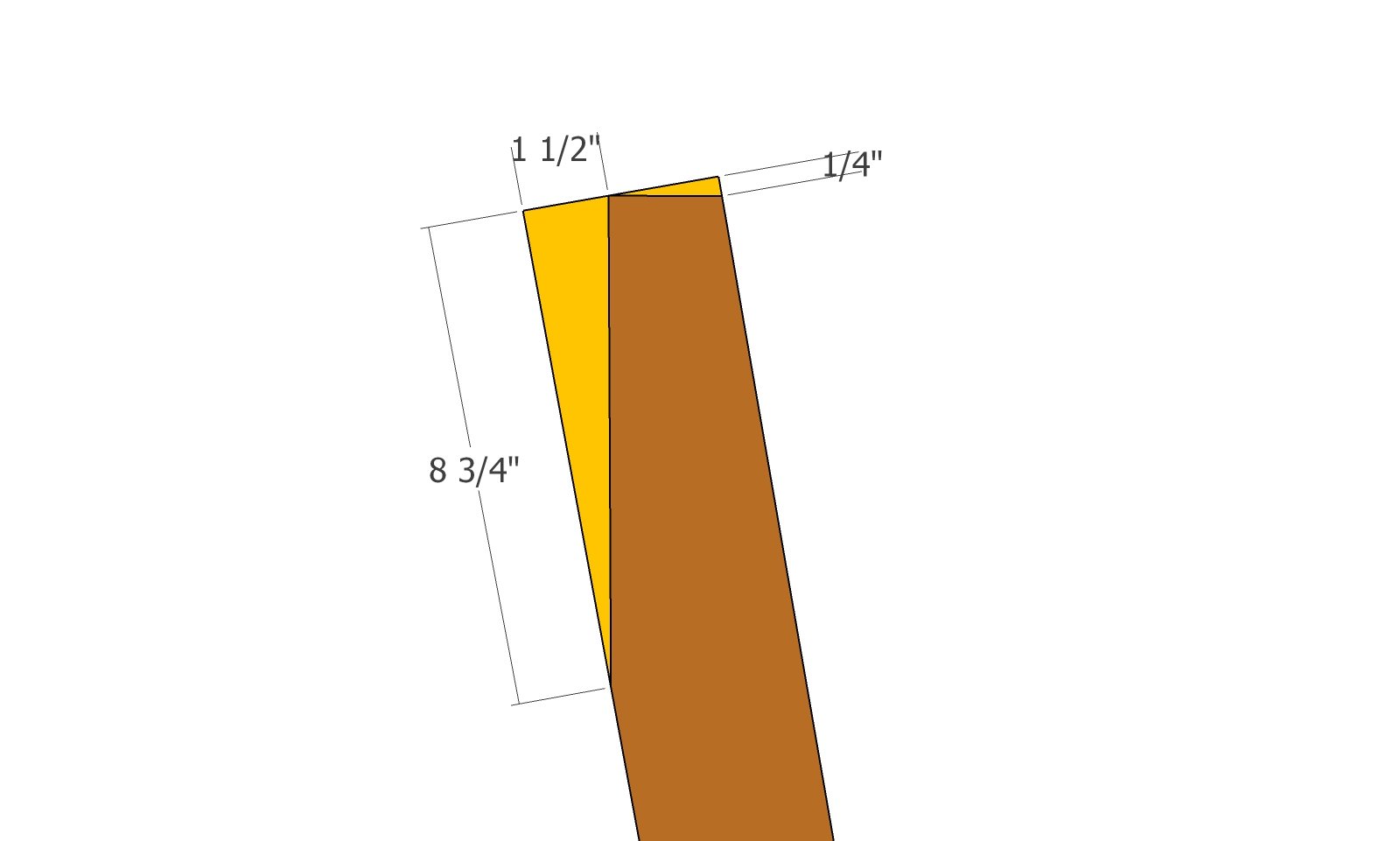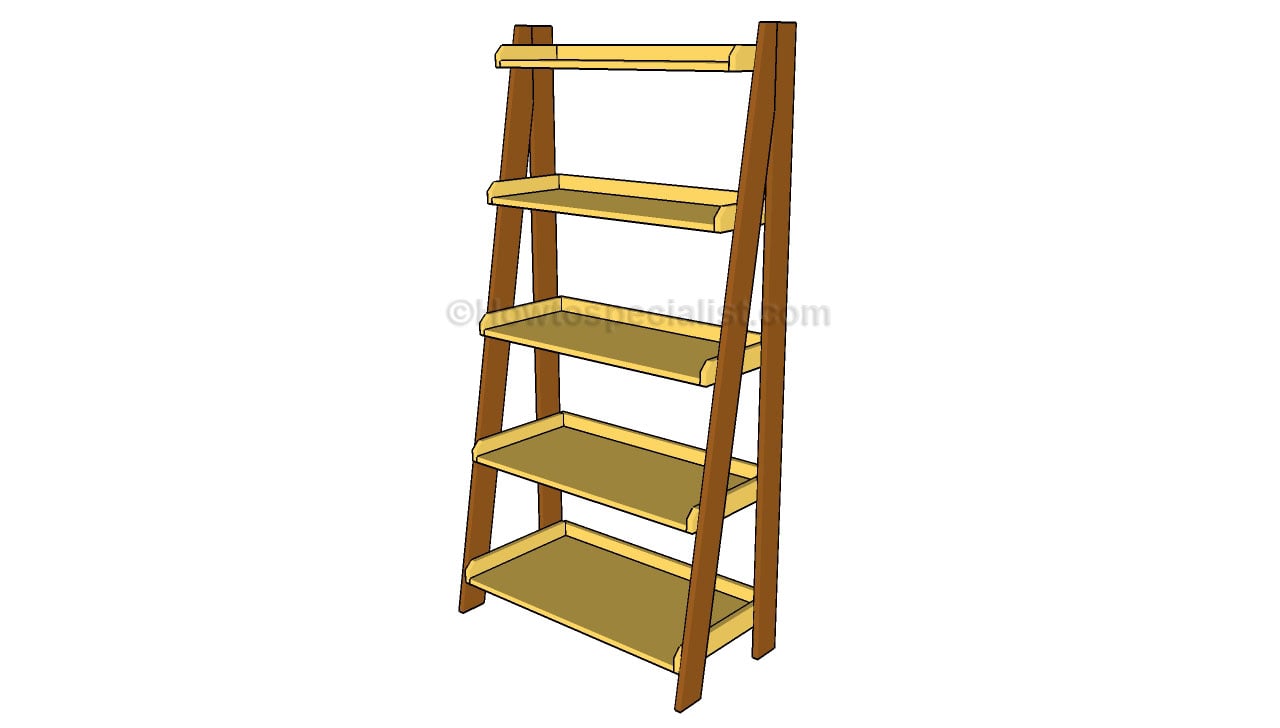This step by step woodworking project is about ladder shelves plans. Building lean to shelves is a straight forward project that will add value to your property. Nevertheless, building the right organizer for your closet is a tough challenge, as it requires a proper planning and quality materials. Irrespective of the plans you are going to use, we strongly recommend you to plan every step of the project with attention.
We strongly recommend you to pay attention to the instructions described in this article before starting the actual assembly. Therefore, invest in the best quality materials you can afford and lock them together with appropriate screws and glue. Cedar, pine or redwood are excellent choices, especially if the boards are straight and don’t have any kind of flaws, such as chips, dents or scratches.
Taking into account closets usually differ in size and shape, we recommend you to adjust the dimensions and the design of the organizer as to fit into place. Moreover, you can even add more shelves and drawers to the organizer according to your individual needs and tastes. Plumb the components and check if the corners are perfectly square before starting the actual assembly. See all my Premium Plans in the Shop.
Made from this plan
Ladder shelves plans
Materials
- A – 2 pieces of 2×4 lumber – 72” long, 2 pieces – 73 1/2″ long LEGS
- B – 1 pieces of 1×18, 1×16, 1×14, 1×12 and 1×10 lumber – 33″ long SHELVES
- C – 5 pieces of 1×3 lumber – 34 1/2″ long TRIMS
- D – 2 pieces of 1×3 lumber – 17 1/2″, 15 1/2″, 13 1/2″, 11 1/2″, 9 1/2″ TRIMS
- 4 pieces of 2×4 lumber – 8 ft
- 3 pieces of 1×3 lumber – 10 ft
- 1 piece of 1×18 lumber – 3 ft
- 1 piece of 1×16 lumber – 3 ft
- 1 piece of 1×14 lumber – 3 ft
- 1 piece of 1×12 lumber – 3 ft
- 1 piece of 1×10 lumber – 3 ft
- 1 1/4″ screws
- glue, stain
- wood filler
Tools
- Safety gloves, glasses
- Miter saw, jigsaw
- Chalk line, tape measure, spirit level, carpentry pencil
- Drill machinery and drill bits
Tips
- Apply several coats of wood stain to the wooden components
- Fill the holes with wood filler and smooth the surface
Time
- One Day
Related
Building ladder shelves

Top cut
First of all, we recommend you to build the legs of the ladder shelves. As you can easily notice in the image, we recommend you to build the supports out of 2×4 lumber. Cut one end of the outside leg at 10 degrees by using a good miter saw. Cut the other end at 80 degrees.
Building the actual shelves is a straight forward job, especially if you have experience in working with lumber. Therefore, attach the 3/4″ plywood or boards to the 1×3 trims, as shown in the image.
As you can easily notice in the image, placing the shelves equally spaced is essential for the project. Work with attention and lock all the components together tightly.
One of the last steps of the project is to attach the 1×3 trims to back of the shelves. Although this step is not compulsory, it will most certainly add value to the woodworking project.
Last but not least, we recommend you to take care of the finishing touches. Fill the holes with wood filler and let it to dry out for several hours. Afterwards, smooth the wooden surface with fine-grit sandpaper and vacuum the residues. Round the edges with fine-grit sandpaper.
Thank you for reading our project about ladder shelves plans and we recommend you to check out the rest of the projects. Don’t forget to LIKE and SHARE our projects with your friends, by using the social media widgets. SUBSCRIBE if you want to be the first that gets our latest articles.







3 comments
I was so pleased to find these plans for ladder shelves!
How do I determine the cutting angle for the top of the front leg where it joins to the back leg to form the side frames for the shelf unit?
Thank you!
Somebody needs to check the math on these angles and lengths.
Cutting the back leg at 72 the front at 73 and following the instructions for cutting the top joining angle will result in the distance between the legs at the bottom being only 12-13 inches. Not nearly enough space to have a 17 in shelf fit properly.
I’m pretty sure your math is better than a 3D design software… Not really